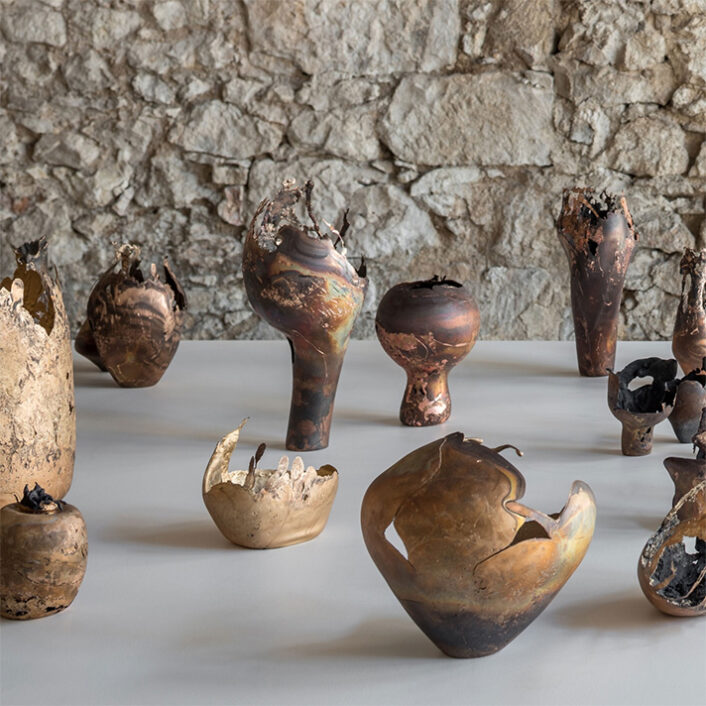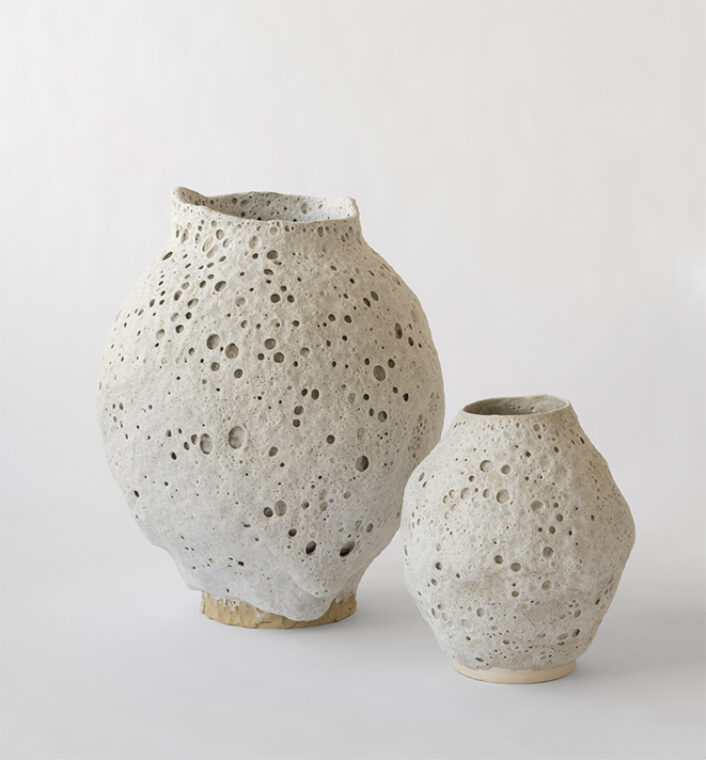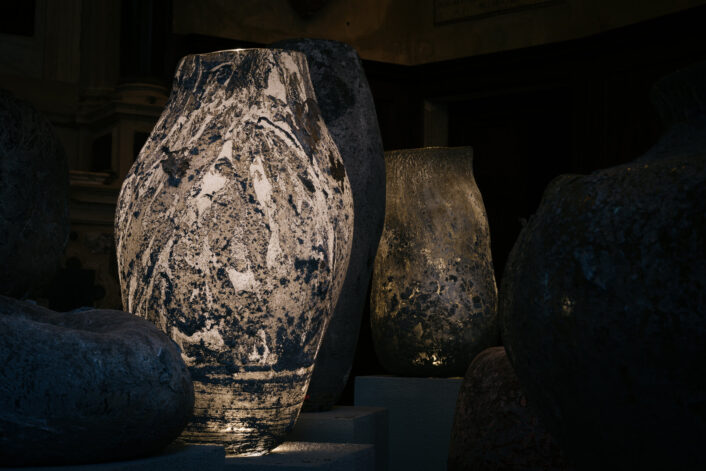Design
Ilona Golovina’s Mugly.NYC
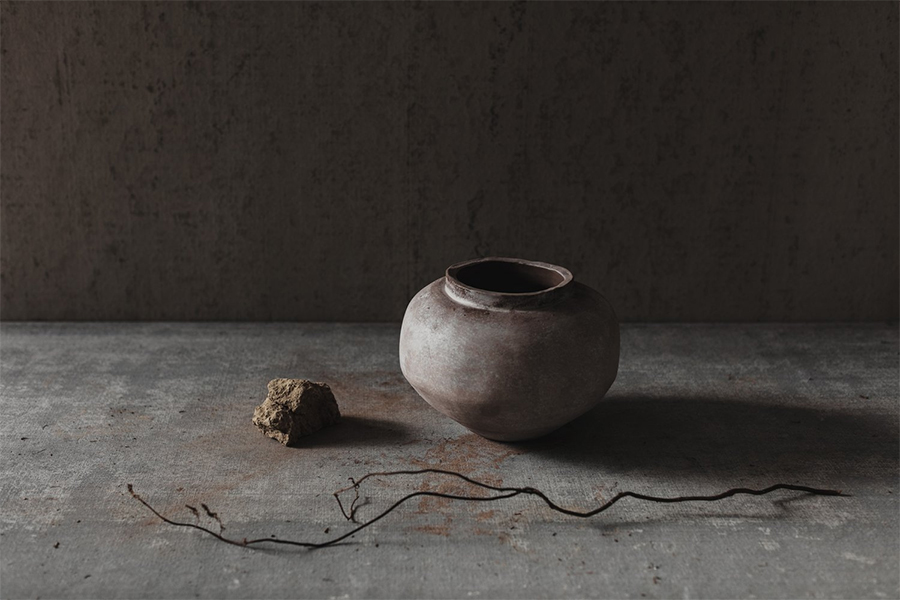
Black stoneware clay vessel, 2022
Image courtesy of: Mugly.NYC, photographed by: Ilona Golovina
For Ilona Golovina, the pandemic was a reawakening. The artist had been unemployed for a while when she realized that she could “kill two birds with one stone:” start her own business and help others earn an income while the country was out of sorts.
That realization prompted Golovina to open a retail store in Williamsburg where she sold handmade, local, one-of-a-kind ceramics. Initially, Golovina connected with a few ceramic artists whose work she admired, and the group was open to working together.
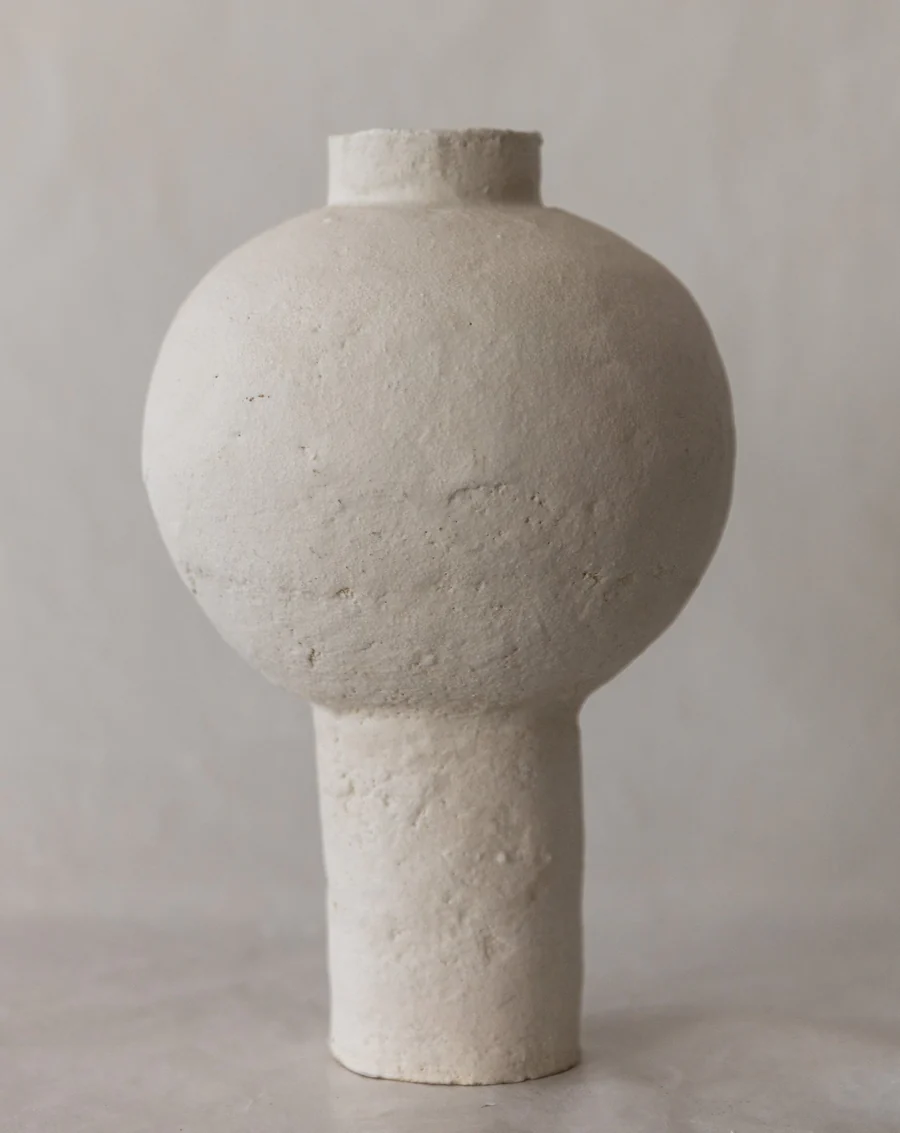
Tall Moon Jar, White Sculpture clay, porcelain slip, and clear glaze.
Image courtesy of: Mugly.NYC, photographed by: Ilona Golovina (found on Hammer and Spear)
Perfecting the imperfections is part of what makes Golovina’s work so amazing; she also works to emphasize simplicity and naturalness. Since founding her brand, Mugly NY, in 2020, the ceramic artist has switched gears. In 2021, Golovina decided to focus on her own ceramic work rather than to represent other artists.
Before too long, Golovina’s work was featured in several print publications, it was also displayed at galleries in the United States, Italy, and Greece. Her vessels are imbedded with inspiration from ancient ceramics that give her work (courtesy of Hammer and Spear) “a timeless feel.”

Golovina molding a ball of clay in her studio.
Image courtesy of: Shoutout LA, photographed by: Maria Panina
Golovina says that using her hands artistically provides her with calm and peace of mind. Perhaps it is because the artist does not try to be perfect; rather, she focuses on imperfections and forges ahead with the creative freedom that the medium allows.
For the past two years, Golovina has been researching and foraging wild clays; this journey lead her to learn about the natural resources in her backyard. The added benefit of being able to collect the material that will be part of her work brought Golovina a new perspective (courtesy of Voyage LA) “and created a more profound connection between me and nature.”
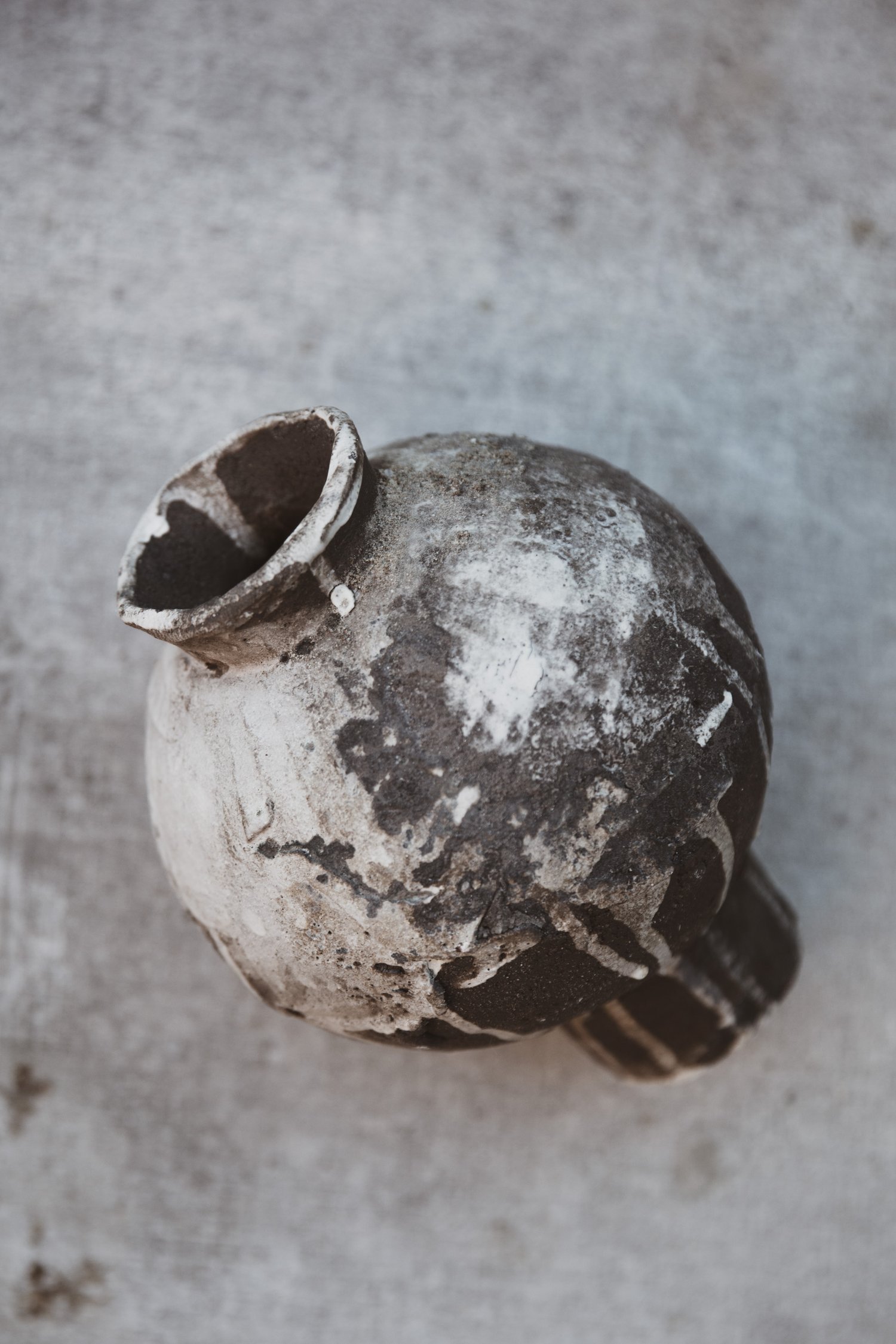
This vessel was made from Sculpture clay, fired-wild clay, and steel wool, to finish, the ceramic was saggar fired.
Image courtesy of: Mugly.NYC, photographed by: Ilona Golovina
Many of Golovina’s vessels are traditional Korean Moon Jars. These rounded vessels, oftentimes glazed with an opaline sheen and known for their imperfections, became fashionable in the late 17th-century. The jars’ irregularities are important in that they reference the vessels’ handmade quality; for example a slight tint of rust or a faint scattering of ash.
Golovina is just one of several ceramists who has taken to creating moon jars in recent years. And with each artist comes his or her own interpretation of the classic moon jar. However evolutionary, the free-form, often biomorphic vessels all start with the same primitive, hand-building techniques that links the present with the generations of people who worked with clay in a similar manner thousands of years prior.
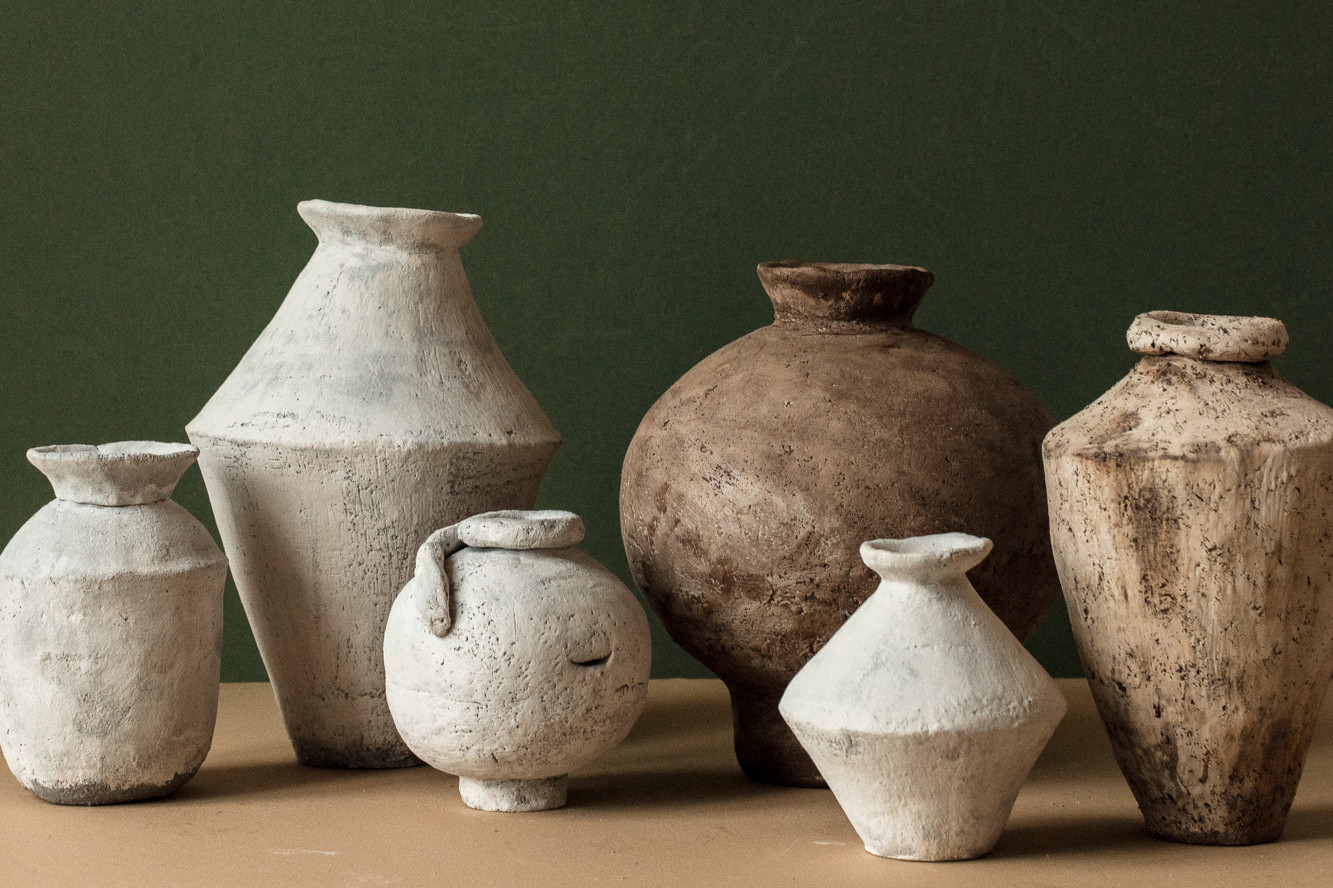
A beautiful grouping of Golovina’s vessels and jars.
Image courtesy of: Mugly.NYC, photographed by: Ilona Golovina
For the self-taught Golovina, moon jars are appealing because of their (courtesy of The New York Times Style Magazine) “ability to communicate the terroir and culture of its maker. She often uses foraged clay, as well as refuse materials from quarries, mines and artists’ studios.” She likes to incorporate experimental slip glazes as finishes and she prefers her unique adaptation of moon jars, specifically, those with elongated, cylindrical necks and bases.
She says, “My works are more like a moon and less of a moon jar, but it’s still a reference, and I make them with a respect for the culture and the tradition.” For jars that were originally used for simple floral arrangements or storage, we are thrilled that Golovina chose to reincarnate their existence.
